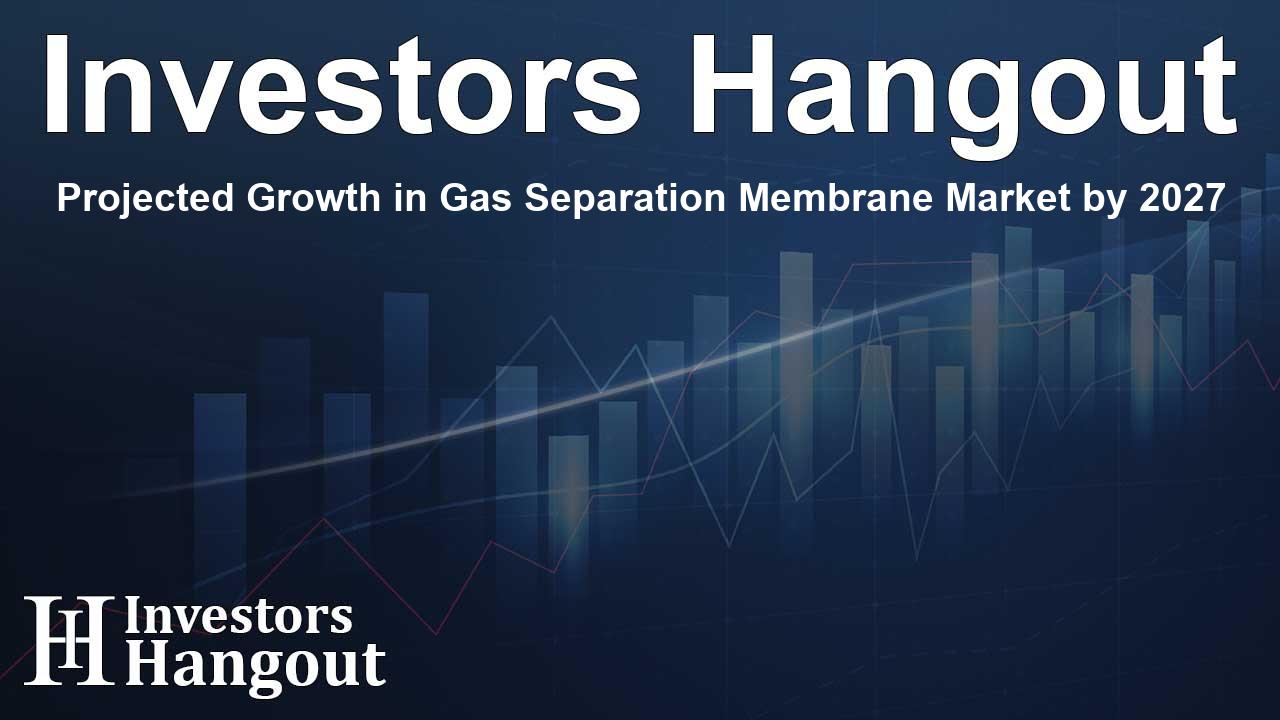Projected Growth in Gas Separation Membrane Market by 2027

Growth of the Gas Separation Membrane Market
The gas separation membrane market is on a promising trajectory, projected to grow significantly as industries adopt innovative technologies. This growth is primarily fueled by increasing biogas demand and the emergence of cutting-edge AI technologies that revolutionize market operations. With an estimated expansion of USD 841.31 million from 2023 to 2027, the market's compound annual growth rate (CAGR) is expected to be around 6.3% during this period.
Key Factors Driving Market Expansion
Several factors are propelling the growth of the gas separation membrane market. Increasing environmental concerns are prompting companies to seek alternatives to traditional separation techniques that often come with high energy costs. Membrane-based technologies are gaining traction in various industries, particularly in petrochemicals where efficiency and sustainability are paramount. For instance, Imtex has unveiled its innovative Permylene membrane technology, aimed at enhancing the purification process of olefins. This technology is designed to separate olefins from paraffins, leading to notable cost and energy savings while also offering environmental benefits.
The Rising Demand for Biogas
As organizations pivot towards sustainable solutions, the demand for biogas is surging. This renewable energy resource leverages organic waste, and its growing acceptance is boosting the gas separation membrane market. Diverse sectors are exploring viable ways to incorporate biogas into their operations, leading to heightened interest in efficient gas separation technologies. Additionally, stringent regulations regarding carbon emissions are pressuring industries to implement advanced carbon capture techniques, further invigorating this market.
Challenges in the Market
Despite the growth potential, the gas separation membrane market faces challenges, particularly regarding the high costs of manufacturing and acquiring advanced membranes. For example, leading suppliers like Air Products and Chemicals and Air Liquide are known for premium-priced membrane solutions that can range significantly in cost. These price points present a barrier, especially in developing regions where capital investment is lower.
Diverse Applications and Market Segments
Gas separation membranes are critical to various applications, including nuclear energy, oil and gas, water treatment, and even food and beverage processing. Within the market, segments such as product types and end-users further delineate the areas of demand. Common membrane materials include polyimide, polysulfone, and cellulose acetate, each chosen for their unique properties that cater to specific operational needs.
Understanding Market Dynamics
The dynamics within the gas separation membrane market are also influenced by technological advancements. Continuous research efforts are directed toward enhancing membrane capabilities to meet industry demands for efficiency and environmental compliance. Membranes that can withstand high temperatures and possess exceptional durability are increasingly sought after, aligning with trends in energy production and emission reduction.
Technavio's In-depth Market Analysis
Technavio, as a reputable global technology research firm, delves deep into market analyses, offering insights into emerging trends and forecasts that can be crucial for businesses navigating this evolving landscape. With a commitment to providing actionable data, Technavio equips enterprises with the tools needed to make informed decisions and capitalize on growth opportunities.
Contacting Technavio
For businesses interested in exploring comprehensive market reports and insights, Technavio provides robust research covering various technologies and market opportunities. Interested parties can reach out through their website for more information on their findings and to request tailored market insights.
Frequently Asked Questions
What is the projected growth of the gas separation membrane market?
The gas separation membrane market is projected to grow by USD 841.31 million from 2023 to 2027, with a CAGR of about 6.3% during this period.
What drives the demand for biogas?
The rising need for sustainable energy solutions and environmentally friendly technologies drives the increasing demand for biogas across various industries.
Which industries use gas separation membranes?
Industries such as oil and gas, water treatment, pharmaceuticals, and food and beverage utilize gas separation membranes for various applications.
What challenges does the gas separation membrane market face?
The high costs associated with acquiring advanced membranes pose significant challenges, particularly in developing economies where budget constraints exist.
How does Technavio support businesses in this market?
Technavio provides in-depth market analysis, reports, and actionable insights that help companies identify opportunities and strategize their market presence effectively.
About Investors Hangout
Investors Hangout is a leading online stock forum for financial discussion and learning, offering a wide range of free tools and resources. It draws in traders of all levels, who exchange market knowledge, investigate trading tactics, and keep an eye on industry developments in real time. Featuring financial articles, stock message boards, quotes, charts, company profiles, and live news updates. Through cooperative learning and a wealth of informational resources, it helps users from novices creating their first portfolios to experts honing their techniques. Join Investors Hangout today: https://investorshangout.com/
Disclaimer: The content of this article is solely for general informational purposes only; it does not represent legal, financial, or investment advice. Investors Hangout does not offer financial advice; the author is not a licensed financial advisor. Consult a qualified advisor before making any financial or investment decisions based on this article. The author's interpretation of publicly available data shapes the opinions presented here; as a result, they should not be taken as advice to purchase, sell, or hold any securities mentioned or any other investments. The author does not guarantee the accuracy, completeness, or timeliness of any material, providing it "as is." Information and market conditions may change; past performance is not indicative of future outcomes. If any of the material offered here is inaccurate, please contact us for corrections.